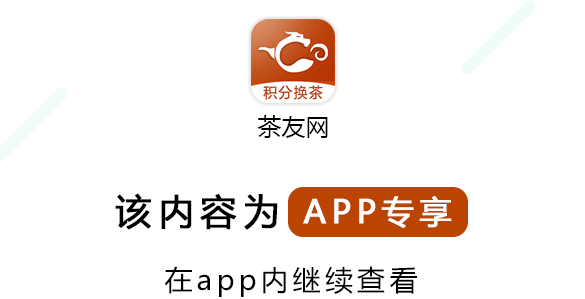分享几个日常生活中可能用到的地道表达(17)
第17期
场景:日本茶文化
适合与老外打交道的茶友们
无论是聚会,参展,卖茶等都能用上
掰扯两句中日茶文化的对比,会大大加分哦~
Here are two types of tea ceremony - the Chanoyu, sometimes called the Matcha, and the Sencha.
日本茶道有两种,一种是茶の湯(有时也称为抹茶),一种是煎茶。
【wikipedia】解释:
In Japanese, it is called chanoyu (茶の湯) or sadō, chadō (茶道), while the manner in which it is performed, or the art of its performance, is called (o)temae ([お]手前; [お]点前).
引自:Surak, Kristin (2013). Making Tea, Making Japan: Cultural Nationalism in Practice. Stanford: Stanford University Press. p. 272. ISBN 978-0-8047-7867-1.
The Chanoyu ceremony takes place in a wooden or bamboo teahouse called a Chashitsu.
日本茶道在木制或竹制的茶室进行。
【wikipedia】解释:
A chashitsu (茶室, "tea room") in Japanese tradition is an architectural space designed to be used for tea ceremony (chanoyu) gatherings.
引自:A Chanoyu Vocabulary: Practical Terms for the Way of Tea, entry for chashitsu . Tankosha Publishing Co., 2007.
Tea is one of the most popular drinks in Japan and a tea ceremony is a very important and special event. It is a time to relax and enjoy the loveliness of the simple things around you.
在日本,茶是流行的饮品之一,茶道则非常重要和独特。人们可以从中享受闲适与简素之美。
干货分享
分享UKTEA&INFUSIONS网站关于茶文化的系列文章之一,原文名为《Japanese Tea Ceremonies》。文章短小精炼,虽然没有文化历史的深度加持,但以老外的视角来看,也直截了当。
可用于整理对比。如果既看得懂,也能在适当场合随口说出,甚好。(翻译为意译,仅供参考)
The garden around the teahouse is very simple with lots of green plants rather than flowers, a small rock garden, and a stream. A path winds its way through the garden leading to the teahouse. (茶室所在的院子非常简约,岩石细流,绿茵环绕。院里子有一条蜿蜒小路通往茶室。)
First you must wait at the entrance to the garden until you are calm and ready to enter. The Teishu or tea master welcomes you when you are in the garden. He or she brings fresh water for you drink and to wash your hands. Now you follow the Teishu along the path to the teahouse. (心静如水后方可进院,此时茶室的主人已在院里迎接。根据主人示意,客人先饮水后净手,然后才沿着小路去茶室。)
【 Chanoyu World】解释:
The Teishu 亭主, or “Master of the Pavilion” (for some reason Sekishu 席主 is not used here) is also known as “the East” or Tou 東. In modern Chinese it still means “owner; one who stands treat.” In Zen practice, the Abbot or retired Abbot lived in the “Eastern Hall 東堂” and was thus known as “Eastern Hall.” Even today, the properly built Zen main hall is known as the Abbot’s quarters or Hojo 方丈. The classical size of the Hojo is about 10 foot square which equals the size of the four and a half tatami room.
When doing temae the host has the guest on the right side. The guest might be seated on the left side, but then the temae is known as Gyakugatte.
Inside the teahouse, the Teishu makes the tea using powdered green tea called matcha . The tea is mixed with boiled water using a bamboo whisk and served in small bowls. (在茶室,主人把抹茶盛入小茶碗,倒沸水再用茶筅搅拌之,以示茶道。)
Guests sit on the floor around a low table. When the Teishu gives you your tea, bow, take your bowl with your left hand, and then hold it with your right hand. Place the bowl in front of you and turn it to the right so that you don t drink from the side that was facing you. Usually the Teishu gives you a sweet cake or a mochi to eat as well because the tea is bitter. (客人围着低脚茶桌席地而坐,鞠躬后,用左手接主人递的茶碗,再换到右手端之。客人需正面对着茶碗并右转之,以防有图案的一面被喝掉。通常,主人备有甜点或糯米团以解茶之苦味。)
When you have finished your tea turn the bowl to the left and place it on the table in front of you - you must drink it all! You turn the bowl to show the Teishu respect: it means that the edge of the cup he gave you was the best, but you are not good enough to drink from that side. Sometimes the guests share one bowl that they pass around. (饮毕,左转茶碗并奉还到茶桌上,以示尊重。意思是,主人递给客人杯子的那一面是最好的,你答谢其用心所以转而饮之,再转而还之。有时,客人们轮流传递用同一个茶碗。)
The Sencha ceremony, is more relaxed than the Chanoyu ceremony. The rules for serving the tea are traditional but the occasion is more easy-going for the tea drinkers. (相比抹茶,煎茶偏灵活。虽然奉茶的讲究很传统,但对客人来说,环境和场合更轻松一些。)
【wikipedia】解释:
Sencha (煎茶) is a type of Japanese ryokucha (緑茶, green tea) which is prepared by infusing the processed whole tea leaves in hot water.
This is as opposed to matcha (抹茶), powdered Japanese green tea, where the green tea powder is mixed with hot water and therefore the leaf itself is included in the beverage. Sencha is the most popular tea in Japan.
Most people in Japan don t have their own teahouse but they often belong to a tea club where they go every week to take part in the tea ceremony. (大部分日本人没有自己的茶室,但他们往往是协会成员,每周相约茶道。)

这篇文章虽然没把日本茶道铺开来讲,但可与中国茶文化,韩国茶文化,俄罗斯茶文化等对比理解(后两者下期更新)。了解中国茶文化可点击:茶相关的几个英语表达 - 茶文化与茶相关的几个英语表达 - 茶文化(这是两篇哦~,名字一样内容互补)
1. 不定期更新tea time,内容选自native speaker的原文片段。
2. 适合与老外交流茶叶的小伙伴,可增强茶叶方面的日常英语积累和表达。
3. 招募小伙伴一起玩儿茶。有激情和热情,有想法又会玩的你,欢迎随时私信。
4. (空一行,等你一起来写哟~)
整理:木禾火


photo from pinterest













暂无评论